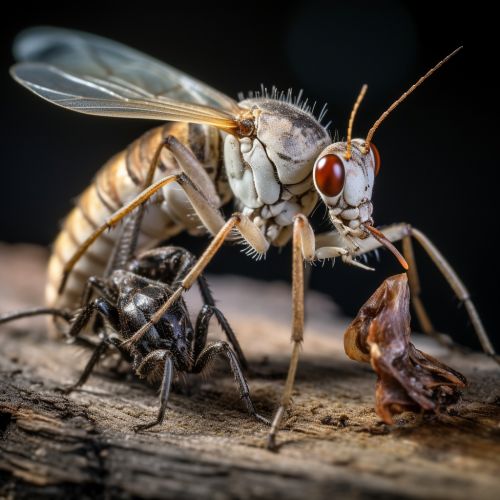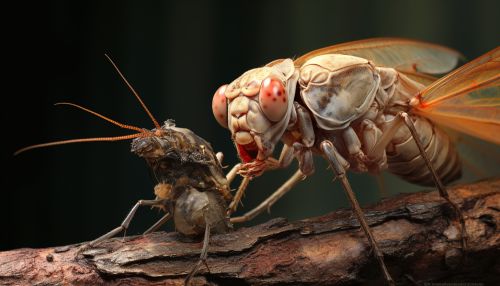The Role of Hormones in Insect Development
Introduction
Insects, a class of invertebrates within the arthropod phylum, are the most diverse group of animals on the planet, with over a million described species. A key factor in this diversity is the complex process of insect development, which is regulated by a range of hormones. These hormones control every aspect of an insect's life, from embryonic development and growth, to metamorphosis and reproduction.
Hormones and Insect Development
Insect development, or morphogenesis, is a process that involves the transformation of a fertilized egg into an adult insect. This process is regulated by a series of hormones, which are chemical messengers that carry signals from one cell, or group of cells, to another. In insects, these hormones are primarily produced by the endocrine system, which includes a variety of glands and tissues.
Major Hormones in Insect Development
There are several hormones that play crucial roles in insect development. These include ecdysteroids, juvenile hormones, and anti-juvenile hormones.
Ecdysteroids
Ecdysteroids are a group of steroid hormones that regulate molting and metamorphosis in insects. The most well-known ecdysteroid is ecdysone, which is synthesized and released by the prothoracic glands. Ecdysone triggers the process of molting, during which the insect sheds its old exoskeleton and forms a new one. During metamorphosis, high levels of ecdysone initiate the transformation of the larva into a pupa, and then into an adult insect.
Juvenile Hormones
Juvenile hormones (JHs) are sesquiterpenoid hormones that regulate growth, development, and reproduction in insects. They are produced by the corpora allata, a pair of endocrine glands located near the brain. JHs prevent the onset of metamorphosis by inhibiting the action of ecdysteroids. They also regulate reproductive maturation and the production of eggs in adult insects.
Anti-Juvenile Hormones
Anti-juvenile hormones, also known as precocenes, are compounds that disrupt the action of juvenile hormones. They induce premature metamorphosis in insects, leading to developmental abnormalities and death. Precocenes are used as insecticides due to their ability to disrupt insect development.
Hormonal Control of Insect Development
The development of an insect from egg to adult is a complex process that requires precise control. This control is achieved through the coordinated action of ecdysteroids and juvenile hormones.
Regulation of Molting
Molting, the process by which insects shed their old exoskeleton and form a new one, is regulated by ecdysteroids. The release of ecdysone by the prothoracic glands triggers the molting process. However, the effect of ecdysone is modulated by the level of juvenile hormones. High levels of JHs prevent metamorphosis and promote the formation of a new larval exoskeleton. As JH levels decrease, ecdysone triggers the transformation of the larva into a pupa.
Regulation of Metamorphosis
Metamorphosis, the transformation of a larva into an adult insect, is also regulated by ecdysteroids and juvenile hormones. High levels of ecdysone, in the absence of JHs, trigger the onset of metamorphosis. During this process, the larval tissues are broken down and adult structures are formed.
Conclusion
Insects have evolved a complex system of hormonal control to regulate their development. This system allows them to adapt to a wide range of environmental conditions and has contributed to their success as a group. Understanding the role of hormones in insect development can provide insights into the mechanisms of insect growth and metamorphosis, and can also have practical applications in pest control and agriculture.


